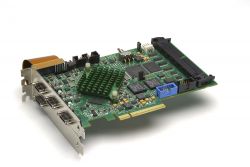A First in Space History – Rosetta Space Probe Lands on Comet after Ten Years of Travel
This ballistic lander, weighing 100 kg, landed successfully on the comet on November, 12th 2014.
At the end of May 2014, the Rosetta space probe moved into an orbit around the comet 67P/Churyumov-Gerasimenko in order to, map its surface and prepare for the landing of Philae. This ballistic lander, weighing 100 kg, landed successfully on the comet on November, 12th 2014. The probe is powered by FAULHABER DC motors to ensure a secure landing. After an adventurous journey of over 10 years through outer space, this is a first in the history of space travel. Landing on a comet - a maneuver which has never been performed before - is in many ways beset with difficulties. The search for a suitable place to land was carried out on the basis of high‐resolution images of the comet's surface. These only became available, however, after Rosetta was just a few kilometers of the comet. There is also little known about the exact composition of the surface of the comet. Ice and dust, fissures and craggy structures are factors in the landing.
Accordingly, the Philae lander unit was conceived to handle many challenges. FAULHABER DC motors help firmly anchor Philae on the comet. One of the greatest challenges is the minimum gravity affecting 67P. There is indeed no risk that the probe could break apart upon landing, as it only weighs a few grams on the comet. Rather, the aim was to prevent Philae from bouncing off the planet again. In order to find firm footing on the surface and ensure this footing throughout the entire duration of the mission, a special anchor system was developed. Immediately after contacting the ground upon landing, two harpoons are shot by propellant charge into the surface of the comet. To secure the lander, they are then drawn taut by means of two cable winches, each one driven by a FAULHABER motor. Thanks to FAULHABER's expertise with regard to applications in outer space, the harpoons and a host of other systems of the lander are equipped with FAULHABER drives. FAULHABER DC motors are at work in the instruments and experimental facility of Philae to investigate the structure and composition of the comet surface. As a result, valuable insights into the origin and evolution of our solar system will be achieved through the mission. MICROMO is a proud member of the FAULHABER Group. The tradition of innovation continues on earth and throughout space.
Featured Product

